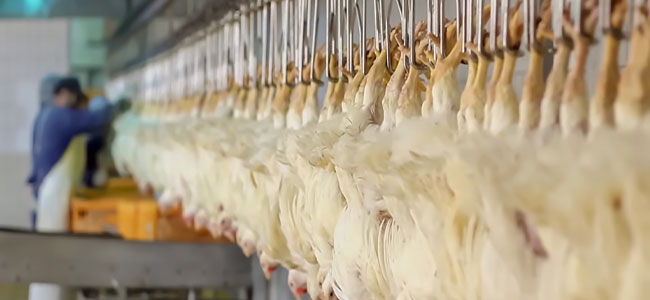
OSHA Finds Chicken Processing Plant Again Exposed Workers to Safety Hazards
The investigation into Case Farms Processing Inc. fell under OSHA’s Severe Violator Enforcement Program.
- By Robert Yaniz Jr.
- Feb 12, 2024
OSHA has once again found Case Farms Processing Inc.—a chicken processing facility in Winesburg, Ohio—in violation of federal safety standards. Under OSHA's Severe Violator Enforcement Program, the agency discovered multiple hazards in August 2023.
According to a release dated Feb. 7, OSHA identified three repeat violations, seven serious violations and four other-than-serious violations. These included failures in implementing necessary lockout/tagout procedures, inadequate training for workers on these procedures, insufficient machine guarding and exposure to fall and electrical hazards. As a result, OSHA has proposed penalties totaling $393,449.
“Case Farms Processing again violated federal safety regulations to protect workers on the job. Returning to a facility to find similar violations identified in previous inspections, makes OSHA gravely concerned about worker safety at this facility,” OSHA Area Director Larry Johnson in Columbus said in a statement. “Case Farms exposes its Winesburg workforce—mostly workers with limited English proficiency—to life-altering injuries. The company must come into compliance immediately with the law.”
Since 1988, Case Farm Processing Inc. has been cited 70 times for approximately 450 violations across its facilities in North Carolina and Ohio. Most of these citations relate directly to machine guarding, lockout/tagout procedures, and fall and electrical hazards. The Troutman, North Carolina-based company employs 3,500 workers nationwide.
Case Farms Processing now has 15 business days from the receipt of the citations and penalties to comply, request an informal conference with OSHA's area director or contest the findings before the independent Occupational Safety and Health Review Commission.
About the Author
Robert Yaniz Jr. is the former Content Editor of Occupational Health & Safety.